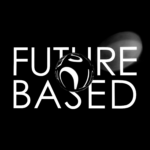“In the realm of colour, chemical colour, synthetic colour, nothing remains the same as it was yesterday.” – Esther Leslie [Synthetic Worlds]

In the ocean your global positioning is in constant fluctuation. If you are salmon in the wild a krill appeals to you. It is pure sustenance. Carotenoids that tint float, draw you in…
“Crustaceans swimming at 63°29’19.8”N, 10°21’55.7”E might be redder than those at 56°52’01.7”N, 6°51’00.6”W, but pinker than those at 56°41’24.9”N, 175°58’53.5”W.”
If you are a scientist, synthetic DNA sequences populate your screen [mind]. If you are a designer: Pantone codes, hex codes, systems. A language is pure control.
“Salmon: A Red Herring” is a work of Color Fiction, or rather of Color as Fiction. The authors, Cooking Sections (Daniel Fernández Pascual and Alon Schwabe), are a UK-based duo exploring the political and ecological implications of food industries.
As humans we evolved to trust what our eyes render, we swim a chromatic memory. An orange must be orange. A yolk must be a certain yellow tone. A salmon salmon. In nature, color is a product of metabolizing: a body turns the color of its food source or its surroundings. In a “next nature” color metabolizes bodies.
BBC News: Pink sparrow surprises with garden visit (27 June, 2018): “Ornithologists believe the bird may have developed its pink colour after feasting on salmon pellets”
Synthetic colors attempt control, an imposition of meaning, they play with the evocation of memories, a multi-billion dollar game of “optics,”. A salmon must be salmon. Invented by Hoffmann-La Roche in the 1990s and now owned by DSM Animal Nutrition & Health, the SalmoFan™ scale is the official color system/palette by which aquaculture industries tint salmon to appeal to the visual standards of freshness of different markets. Japan prefers their salmon deep red, Scandinavia bright orange. A healthy look is a code away. I reached out to DSM for a print copy and their reply on January 31, 2022 was: “I am sorry but our SalmoFans are in very tight supply & they are only available to our aquaculture customers that use our DSM products in their feed.”
When color is ownable, bodies are their temporary passages, over-the-counter multiples of it.
The history of pigments is a history of control and power. From genetic IP control such as DSM’s Carophyll® Pink (astaxanthin), the colorant feed additive used as pellets for salmon; to crypto control such as Pantone releasing Pantone 17-3938, Very Peri, the color of 2022, as a series of NFTs. To own color is to speculate on their exchange value, to invest in its infinity at the cost of bodies of energy or flesh.
This review begins with 11 salmon tones; they are part of the official 15-color palette available in the SalmoFan™; they tint the paper and edges of this small organism-book. Unlikely to get a hold of the real SalmoFan™, I make a fan out of these pages and flip them fast near my cheeks. I can’t smell the ocean nor any fishy flesh. Just clusters of dead black ink. If language can be a virus, then let those printed lines affect us. After all, PRV (piscine orthoreovirus) has been known to create black spots or “melanin staining” in farmed salmon, leading to multimillion dollar losses for this industry. Clusters of dead black tissue.
Color has an imagination…
End note:
Cooking Sections presented this work at Tate Britain in 2020. As part of their concept, they convinced the museum restaurants and cafés to remove farmed salmon from their menu in perpetuity, and instead, to replace it with a ‘Climavore’ dish or ingredients that improve water quality and cultivate local marine habitats.
—
isolarii is an independent subscription-based publisher founded by Sebastian Clark and India Ennenga. isolarii, the term, comes from an obscure Renaissance literary genre which translates into “island books.” The aim is to facilitate an archipelago of today’s most avant-garde thinkers, from philosophers to graphic novelists, in pocket-sized documents.
isolarii 1-6 compiles the first season, including: Salmon: A Red Herring (2020) by Cooking Sections; F Letter: New Russian Feminist Poetry (2020) by Ed. Galina Rymbu, Eugene Ostashevsky, and Ainsley Morse; Purple Perilla (2020) by Can Xue; Street Cop (2021) by Robert Coover and Art Spiegelman; Modern Animal (2021) by Yevgenia Belorusets; and The Archipelago Conversations (2021) by Édouard Glissant and Hans Ulrich Obrist.
Photos by Janna Tew






